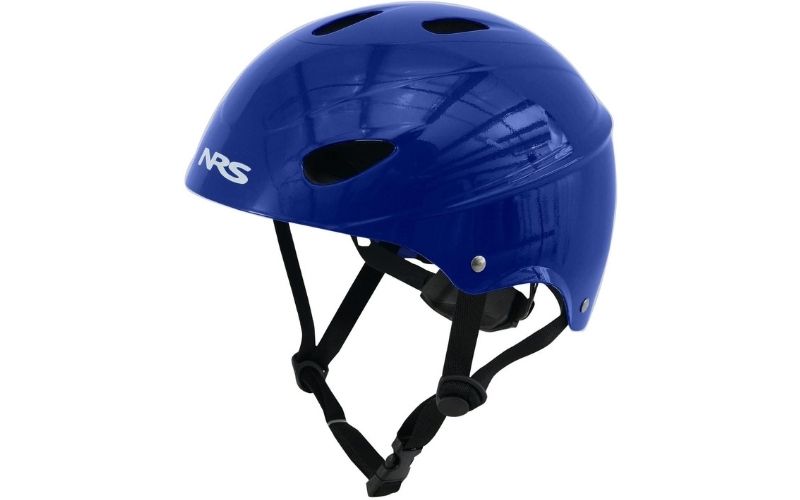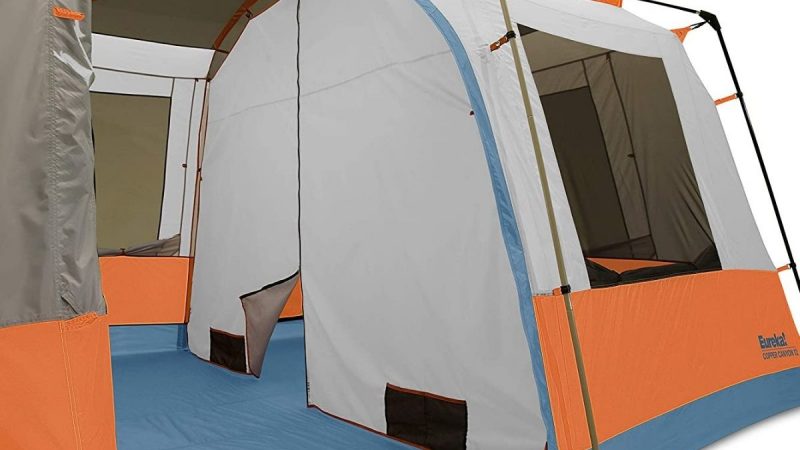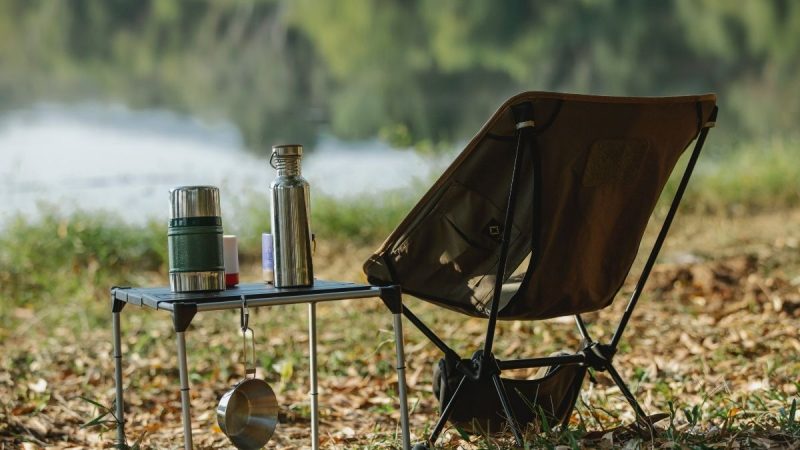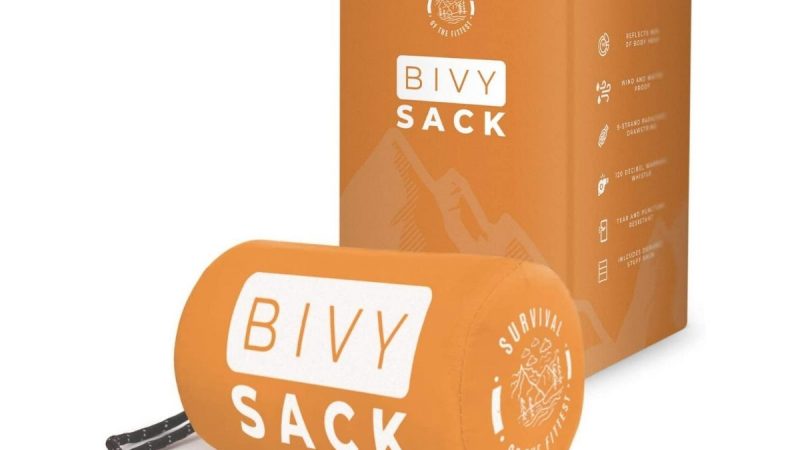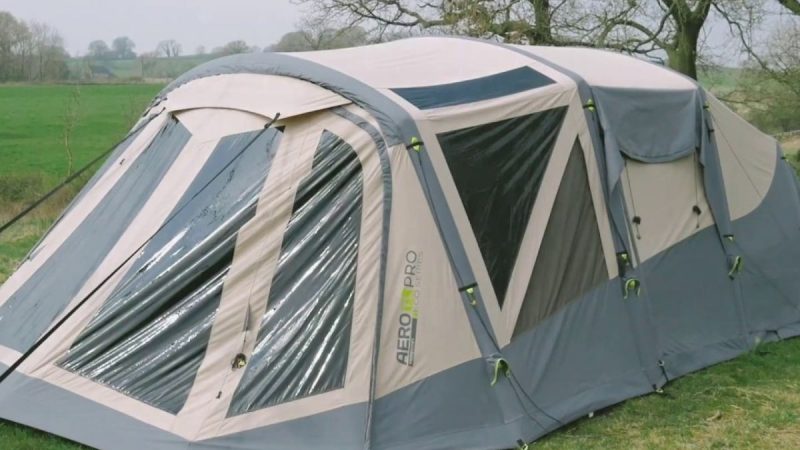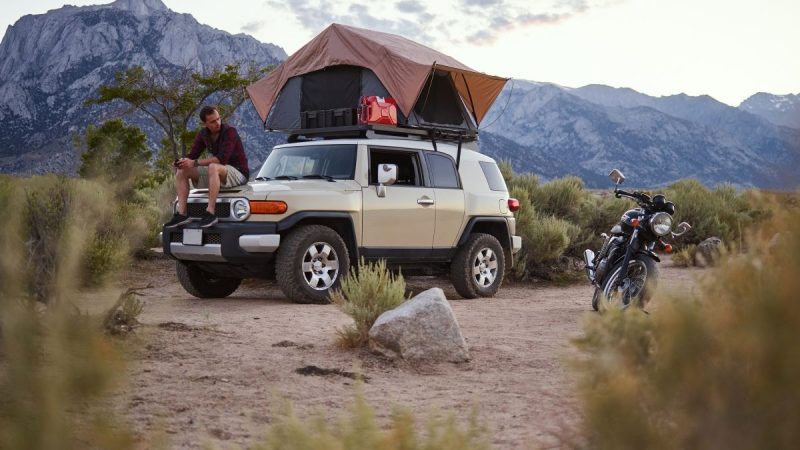Important Tips Every Rafter Must Know About Whitewater Packraft
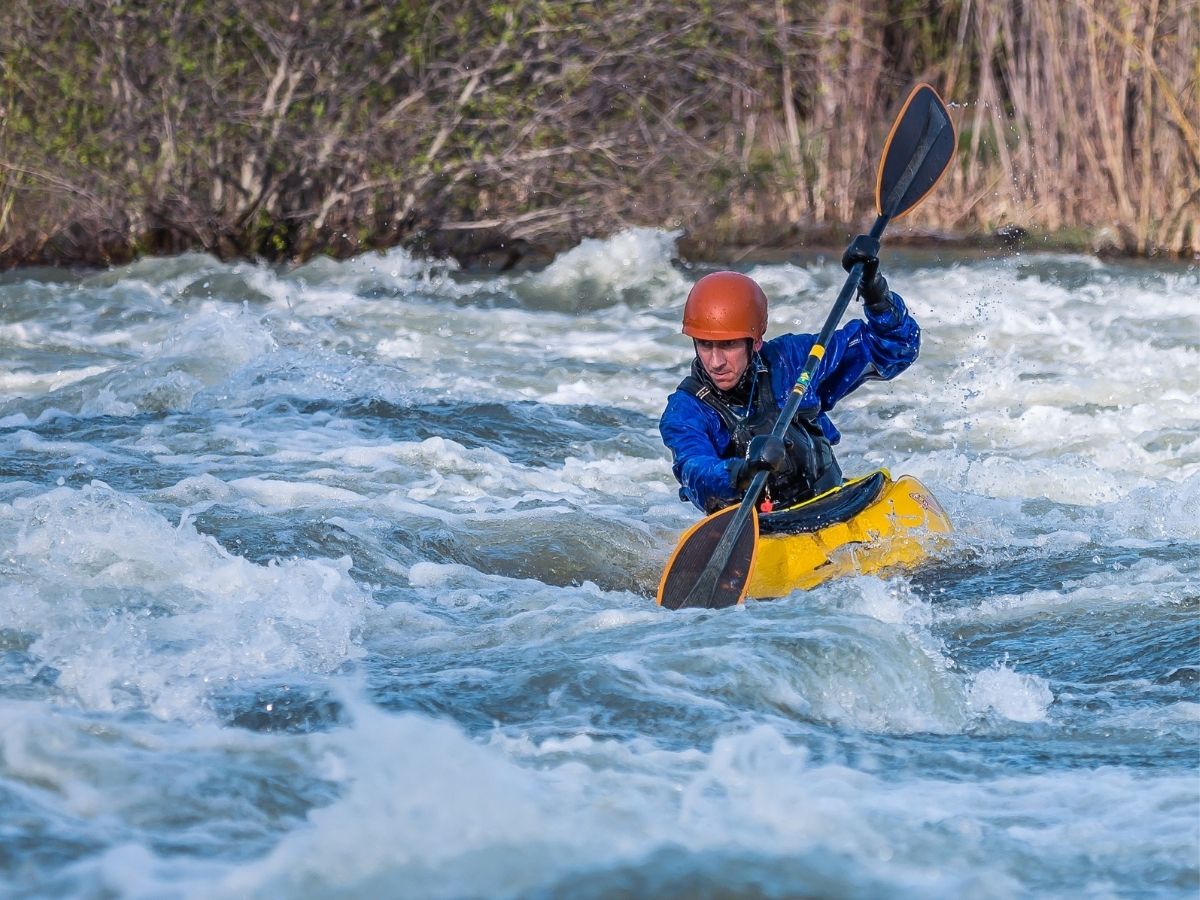
Whitewater packraft is an absolutely interesting part of rafting. The whitewater raft can go very fast on the river, and that is the best part of rafting. The rafting is mostly done in a group, and that is the best part of it. If you want to learn more about whitewater rafting, keep reading to have a better understanding of whitewater packraft before you begin your journey.
Moreover, whitewater packrafting can be a fantastic way to spend some time in the wilderness and get an adrenaline rush at the same time. While it’s not as dangerous as whitewater rafting, it can still be a great challenge and one of the best adventures you’ll ever have. If you’re thinking about giving it a shot, you should be sure to follow all safety precautions. After you’ve been paddling for a while and you feel comfortable, you can start to explore new areas and get more adventurous.
What Is Whitewater Packraft?
Whitewater Packrafting is a unique rafting technique that involves an inflatable pack. Instead of using a bulky and loud boat to travel down the river, pack rafters use a very quiet, small, and lightweight boat. The packraft is an easy craft to use and all you have to do is inflate it and head down the river. The watercraft is ideal to use in swift-moving rivers, lakes, or even the ocean if you have enough skill. It’s fun to use and best of all, it’s less expensive! You can buy a new packraft or rent one and start rafting right away! Whether you’re an expert or a beginner, packrafting is a great outdoor activity for your next trip!
Packraft Trip Videos
Whitewater Packraft Types
1. Paddle Boat Rafting
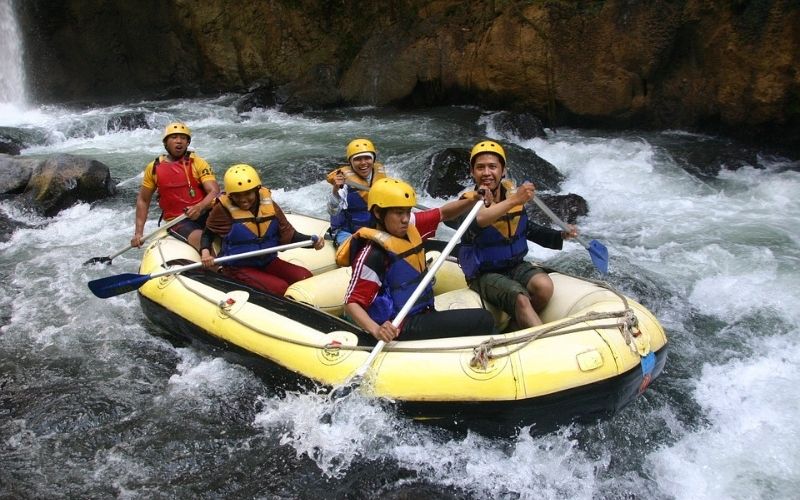
Paddleboats are a common type of whitewater packrafting vessel. They have the advantage of being very maneuverable in tight places, and of being able to carry a lot of gear. This makes them great for exploratory trips where the travel time isn’t cut short by portages. They also have the advantage of being able to carry a lot of gear. This is great as it means you can use a smaller/lighter raft for the same amount of gear.
2. R-2
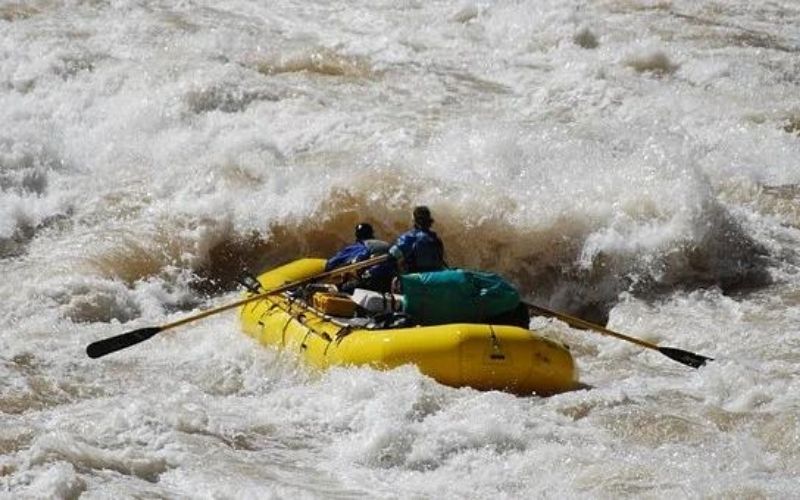
Raft two is when two rafters are standing on the same side of the boat and are leaning backside to backside. This is a more stable position for the raft than raft one and allows the rafters to rest their arms and legs and not have to use their triceps as much. However, if one person is much larger and heavier than the other then the light rafter can be in danger of being tipped into the water. Raft two is a good position for your first time as a rafter though it can be a bit difficult to get into.
3. Stern Mounts
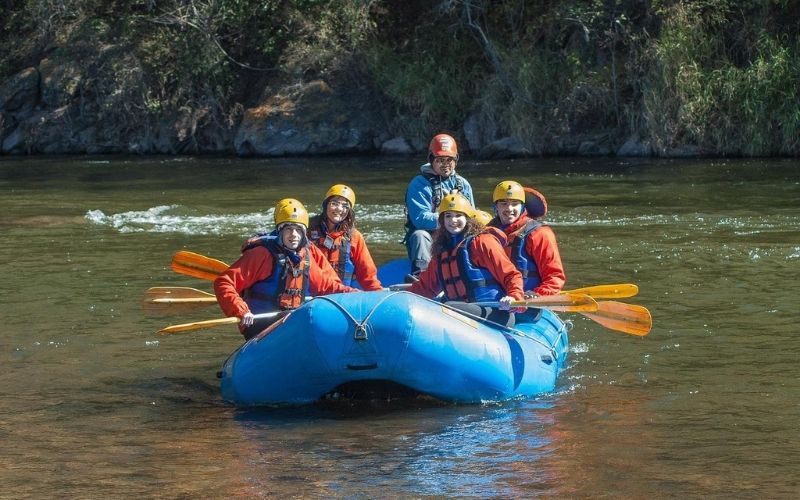
The stern paddle is a modification of the paddle boat. This works well in situations where you have high water and need to maximize your number of paddlers aboard. However, if faced with rocky or swift water this type of boat may end up launching your team over rocks resulting in injury to your team members.
A bow frame is a reinforced part of the raft that is placed in front of the stern. This location helps to reduce the flipping and twisting motion that can occur during white-water rapids. This also allows more room for other people, reducing in turn how close people have to be to one another.
4. Gear Boat
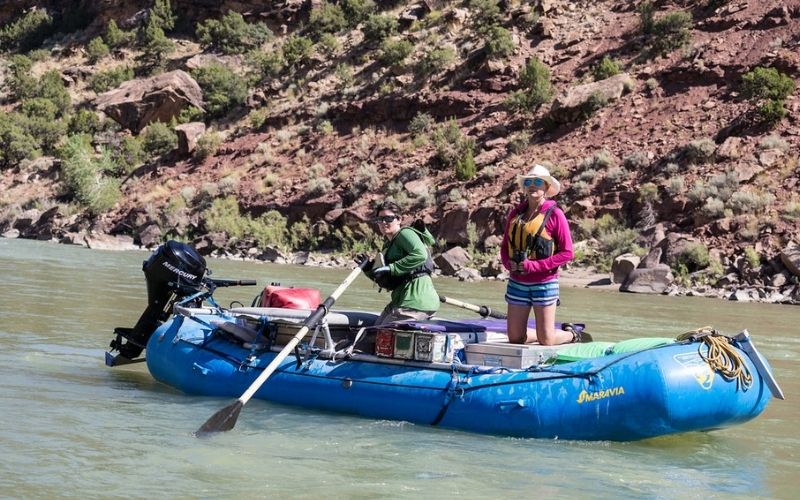
Gear boats are equipped with a double frame in the front that usually takes up most of the boat’s real estate, leaving space behind it to fill with equipment. That’s because gear boats are designed to carry a lot at once and they’re used often by rafting companies who will either sell or rent them to their customers. It’s possible for two or three people to sit on the frame. Partying during a rafting trip is often half the fun, so those sitting on the frame can be entertained as long as there aren’t rapid waters involved!
3. Oar Boat
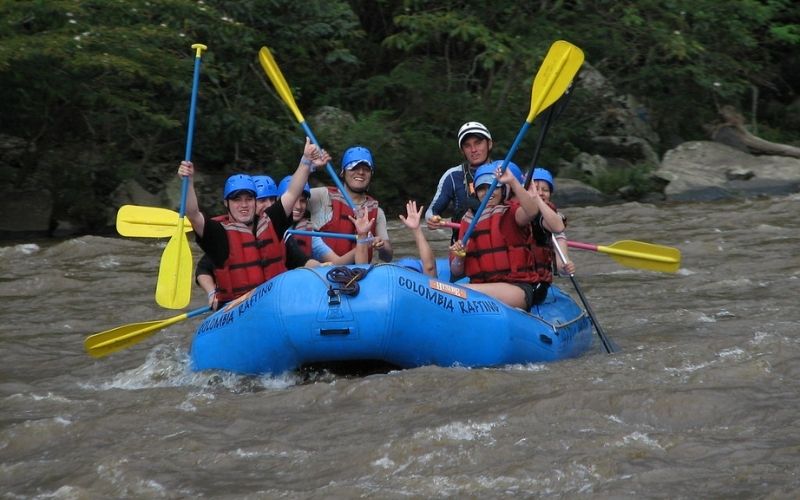
An oar boat without a motor is of course just as light and nimble as its motorized counterpart, but it does have one advantage: it doesn’t require fuel. As the boat for those who care both about efficiency and the environment, rowboats are generally easier to transport if you leave them assembled (although they can be broken down into multiple sections just like canoes). Rowboats often lack the storage space found on their motorized brethren – however, they frequently have the bonus of being able to attach a small sail so that they can be used when there’s no wind!
Choosing a Packraft
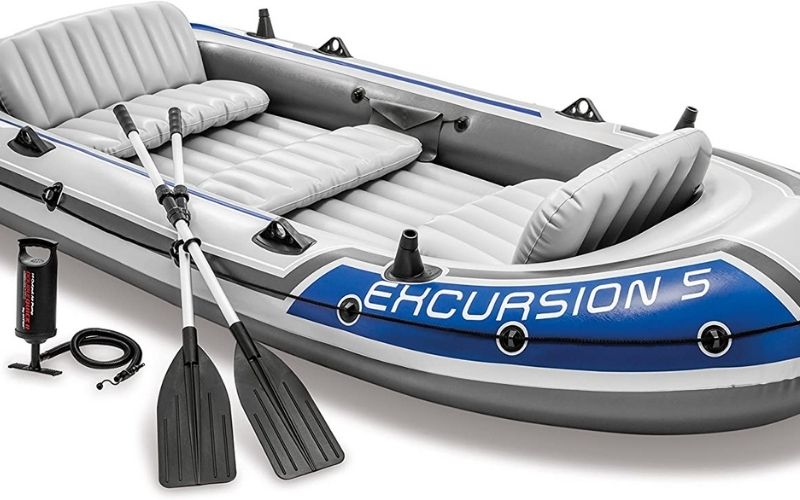
Choosing the right packraft may seem like a daunting task. Always remember that if you’re looking for a way to save some money rafting, you should consider purchasing a packraft, more commonly known as a tactical inflatable boat. These are usually quite sturdy and durable, great for river rafting, and can be easily transported. Although they aren’t the best choice for whitewater rafting, they handle waves and rapids quite nicely. If you’re looking to go on a serious whitewater rafting trip, you will want to purchase a specific rafting raft and don’t have the space or budget for an inflatable boat, however. Still, if you’re looking for a good price and decent quality, buying a packraft is a great option! Some great packraft choices include Intex Excursion, Intex Explorer, Solstice Boat Series, and more on Amazon.
Skills for Whitewater Packraft
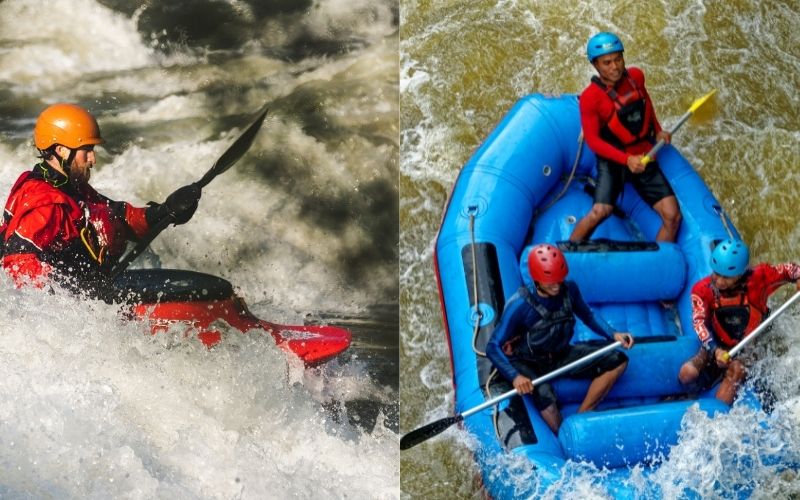
Note: Remember To
Sit Upright
The water levels will be high in the fall, so you will want to keep both your sitting position and the boat upright. If you want to steer the boat during the water ride, you need to turn the boat accordingly or you will lose balance and fall off the boat. Similarly, when you are on flat water and you want to turn left, you will turn the boat to the left. You do this by shifting your weight to the right side of the boat and at the same time, pulling the left side of the boat as you are turning left.
Use Body Rotation
Body rotation is essential to staying upright and afloat. Frosty is the liquid in the raft and will help keep you afloat but you should be mindful to not fall out of the raft and into the water. When you’re in a raft, you’re only given a small amount of room to move around to keep the raft balanced. If you’re outside of the raft, you have the option to paddle forward or backward to stay afloat. You can also rotate your body depending on where the strong current is. If you’re closer to the rear of the raft, rotate your body so that you’re closer to the center. If the current is stronger in the front of the raft, rotate your body so that you’re closer to the back.
Commit Your Body
The first thing you need to do is properly pack your clothing. Then, you need to prepare yourself for the trip by making sure you’re in good shape. Next, you’ll need to know how to properly inflate your raft and the equipment you’ll need to paddle down the river. Lastly, you’ll need to make sure you’re ready to have an adventure and enjoy the thrill of being on a raft floating down the river.
Use Vertical Strokes
If you’re one of the many people looking to get a wilderness experience and go packrafting, then you’ll want to learn how to use vertical strokes. This is because vertical strokes do many things better than horizontal strokes. First, vertical strokes are easier for people that aren’t very athletic to perform. Second, vertical strokes tend to make the raft go faster, which is extremely important when you’re trying to get up a rapid or going it alone. Last, vertical strokes regulate your packraft much better so you don’t have to worry about it flipping and dumping you into the water!
Minimize the Number Of Strokes
If you’re a rafter, you know that there’s nothing like the feeling of floating down a river. You can relish the water and enjoy being one with nature. However, if you’re not using the appropriate rowing strokes, you might have a harder time and it might even be more dangerous. If you know how to minimize the strokes you use, you’ll be able to have more fun and be more comfortable!
Stuff You Might Need for Whitewater Packraft
Paddles
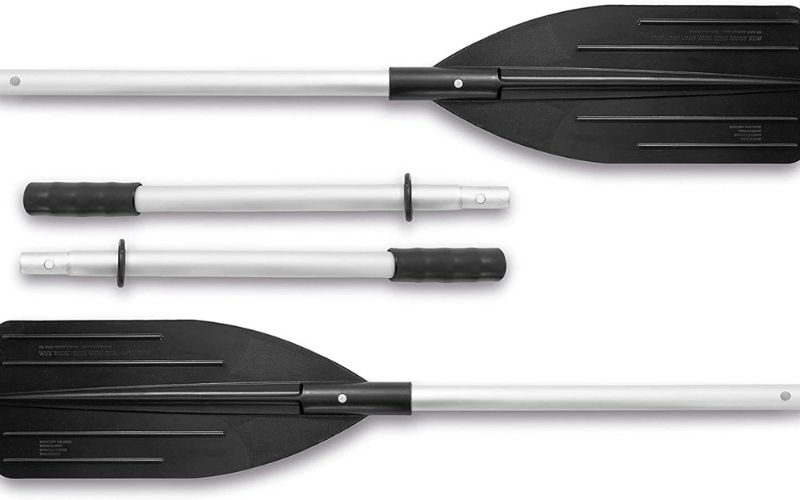
Be sure to carry the right gear on a rafting trip. One item, in particular, that is not optional is a paddle. They are necessary for steering the raft, paddling your way back to shore, paddling up the rapids, and helping you get back onto the raft if you fall in. If you don’t have a paddle, you’ll find yourself in danger and can even get lost on the river without one. Paddles are often overlooked as part of rafting equipment, but that just means it’s an opportunity for you to be one of the few people who know the importance of carrying a paddle on your rafting trip!
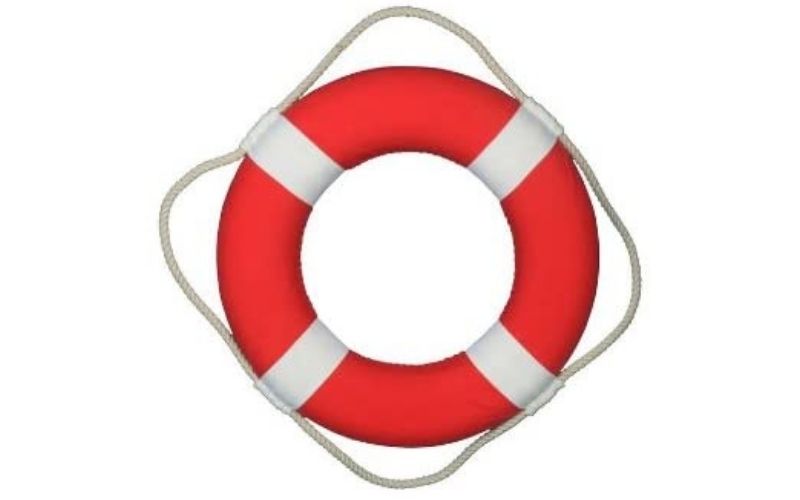
It is important to always bring a PFD (personal flotation device) on a rafting trip. This is because a PFD is essential for survival and is the best way to prevent drowning. They are important because they provide flotation and keep you upright even when you’re in rough waters. A PFD can save your life.
Essentials
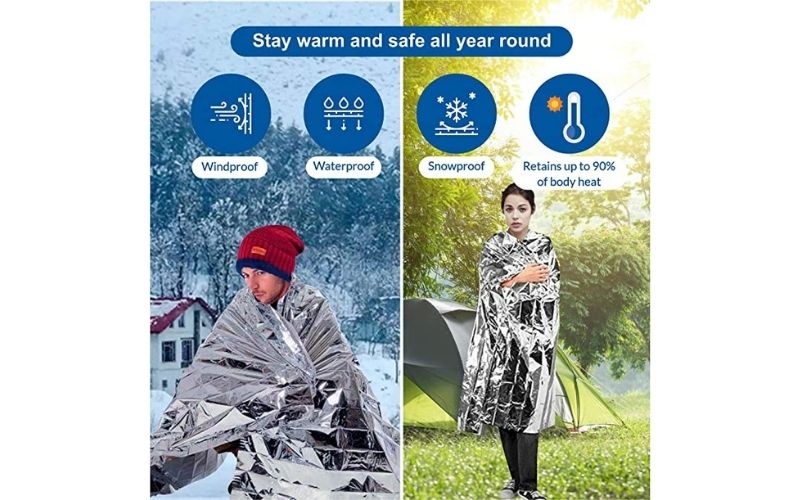
Other essentials to carry during packrafting include a dry bag, first aid kit, sunglasses, sunscreen, insect repellant, water purifying pump, can opener, a trowel for digging for firewood, a lighter, and waterproof matches, and a thermal blanket for overnight trips.
Things You Need To Know To Paddle Safe and Strong
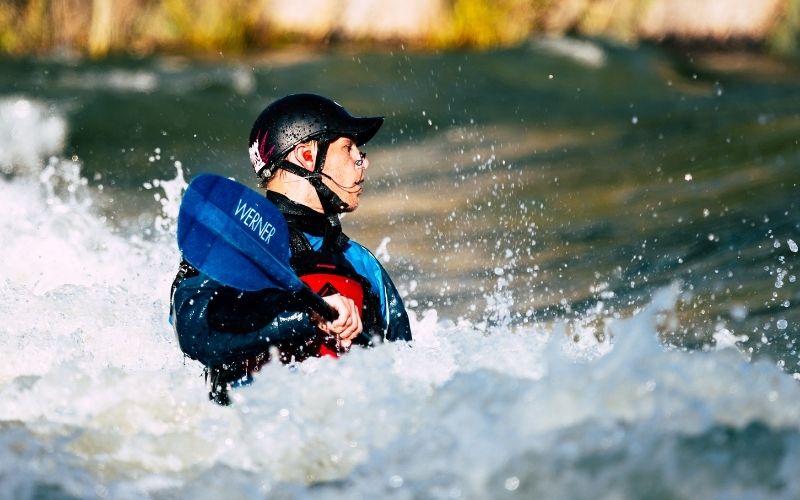
Paddle With Purpose
Rafting is not only a fun activity with friends and family, but it can also be a great source of exercise. Paddling your way through a river can strengthen your upper body, improve your balance, and give you a good burn. Safety is the key to a fun and exciting trip. Make sure you buy the right gear and check the physical health of all the rafters before hitting the water. Going on a leisurely ride downriver is always fun, but if you wanted something more physically challenging, try running some rapids along the way. Rafting with a purpose is paddling with safety during a rafting trip.
Paddle Feature To Feature
If you’re new to rafting, it’s not a bad idea to paddle from one feature to another. For example, if you’re going down a white water river, you’ll want to paddle from rock to rock. If you don’t, you can damage the raft and risk getting injured. But the most important reason is that you can make the ride a lot more fun! Paddling from rock to rock can be a new challenge for adventurous people. It’s an opportunity to experience the thrill of rafting in a new way. For those who aren’t looking for any adventure, however, it’s a great way to get a feel for the water. Many people tend to paddle around ignoring the environment that surrounds them. Paddling from one feature to another is a great way to get people to explore the world around them and enjoy the ride!
It’s All About Momentum
Some things in life you get used to. You don’t see them as a big deal anymore. Like driving a car, for instance. When you first learn how to drive a car, you kind of freak out. But then, you just get used to it. You start driving without even thinking about it. It’s that type of thing that whitewater rafting is about. Momentum. If you’re not careful, you may end up hurting yourself. It’s all about feeling comfortable. When you’re out there with your friends on the river, you shouldn’t be afraid to try anything. After all, you’re in a controlled environment. You may get splashed a little, but you don’t have to worry about anything too crazy. Just relax and let the water carry you downstream safely.
Connection Is Key
Few people enjoy being alone, especially those in stressful situations, like being out on the ocean. Rafting is a very dangerous activity, so it’s important that you feel safe with the people around you. If you’re the only one on your raft, you’re more likely to lose hope and die out there. When you’re on a raft with people who are understanding and care about you, you can pile on the layers and avoid hypothermia better. Without help, hypothermia is quickly fatal in those situations. When you have amazing people around you, you’re more likely to survive and make it out of the situation and that’s something everyone wants. Hence maintaining a connection between fellow rafters is key to a successful rafting trip.
Consider Whether You Have P.A.S.S.E.D
P = POSITION
The position of the boat in a river or stream matters a lot. The most important position to start with is the stern. This is the back of the boat. This is where the passengers seats. There are a couple of ways to steer the boat forward. The first is by the use of a paddle. The second is by the use of a motor. The motor makes use of a propeller to move the boat.
A = ANGLE
A for Angle during rafting means that you can paddle down the river a little farther and enjoy the scenery for a little longer. If you’re in a raft, it is necessary to have someone steer the raft or at least tell people where to go. It is also important to stay with the raft if you’re going above a certain Angle. If you get too far away, you might be swept down the river and separated from everyone else. It may be a good idea to have one friend stay with the raft while everyone else takes turns going off to see the scenery.
S = SPEED
S for Speed in rafting means that the people in the raft will go down the river faster. One of the first things to think about in regards to the speed of a raft is the size of the raft. If the raft is too small, people inside it will not be able to move around. If it’s too big, the raft will be difficult to control. A good size for a raft is between 6 and 12 people. Because it can be difficult to organize who will go in which raft, it’s helpful to write down a number on each person’s hand so that no two people will be in the same raft.
S = STROKES
S for strokes in rafting means safety. In rafting, it is important to be fully aware of the surroundings at all times. This is why a safety helmet is vital to any trip. Also, it is a good idea to wear life jackets which help keep you afloat if you fall out of the boat or if you hit rocks. Before your trip, it is important to learn the right paddling technique in case of an emergency.
E = EDGING
E for Edging in rafting means hiking or running along the river bank to avoid getting stuck on obstacles or pebbles that might derail your run.
Optional: If you are feeling adventurous you can try jumping over the rocks in the river or you can go on a rafting trip and test yourself on rapids.
D = DEPTH
D stands for depth and it means that you should have a raft that’s big enough for everyone to fit in comfortably. Everyone has a different size and weight and you’ll need to make sure that your raft can fit all of your needs. It’s best to have a raft with adjustable footpegs and separate air chambers for each passenger. Finally, make sure you have paddles, life jackets, and a throwable rescue device.
Control Your Turns
When you’re rafting, it is a requirement to be able to make quick turns to avoid obstacles and keep the raft from tipping. To make the best and most controlled turns possible, you need to paddle hard and adjust your body in the direction you want to go. Turning the raft is not a very difficult task, but it will take practice and if you are already on the water it’s a good idea to practice your moves before you get into a situation where you need to make a quick turn. Once you’ve got the hang of it, you’ll be making turns with ease and your rafting trip will be a lot more fun.
Master Technical Strokes
There are many different strokes you can choose from when learning to raft. One of the most common is the forward stroke. To do this, you’ll want to put your oar into the water and slowly pull it out then pull it back in. The other strokes include the backstroke and the breaststroke. These are similar to the forward stroke but they have subtle differences.
Learn To Boof
For those who are new, learning to boof during rafting can be beneficial. This is because it allows you to enjoy the ride better and see more of the rapids. To begin, sit on the boat and balance yourself. This means you’ll need to hold onto the boat with one hand and get a grip with one foot. When the boat comes up, lift your feet and place them on the rail. Immediately, place your other foot on the rail and push off the boat. This will allow you to use the boat’s inertia to get going. However, you’ll need to remember to control your speed by moving your legs up and down.
Take Kayak Lessons
Starting rafting can be tough! You’re in a rapid filled with water, which is the very opposite of what it is to be on the water. However, there are some things you can do to make your trip a lot safer. Taking a kayak class is a good way to learn how to maneuver in the water and it can help you out once you’re in a raft. It can be a little expensive, but it’s worth it!
Build A Team and Then Paddle As A-Team
Building an A team and then paddling as an A team are two important things to bear in mind during a rafting trip. Important safety considerations include having the right equipment and making sure that all team members know how to swim and react to emergencies. If a member of your team is not feeling well, another one should take their place. Alternatively, you can see if anyone else is feeling well enough to swap. You can adapt your rafting trip to the group’s ability. It should be a fun experience for everyone on the team!
Factors Affecting Your Packraft’s Whitewater Capability
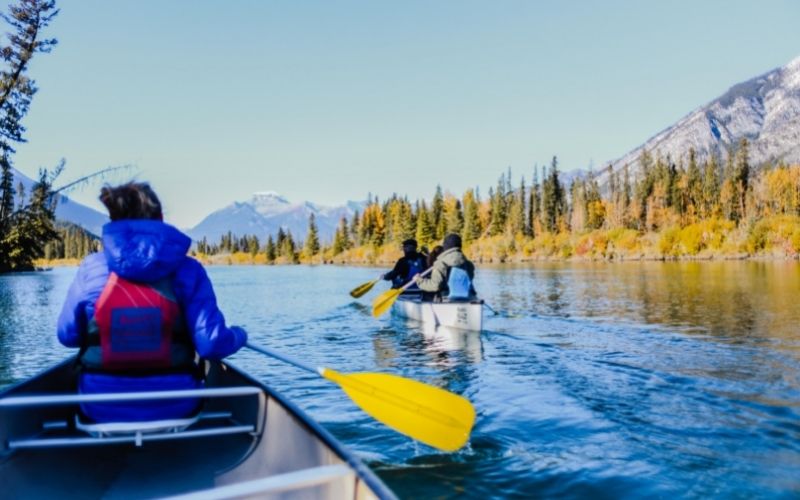
Depending on the location of your raft, there are heaps of factors that can affect your whitewater pack raft’s capability. First, the volume of water is a big factor. For example, the Colorado River has a lot more water than the Ho Chi Minh Trail, so the packrafts on the latter are designed to float on shallower waters. Second, the volume of people on the raft is also a factor. If you have a light raft and you have 5 people on it, your raft is going to sink lower into the water. On the other hand, if you have a 5 person raft and it has just a little bit of weight in it, the raft won’t sink as low and will be more resistant to punctures. So, depending on your location, the factors regarding your pack rafts’ capabilities can change.
Packrafting: Can You Self-Rescue?
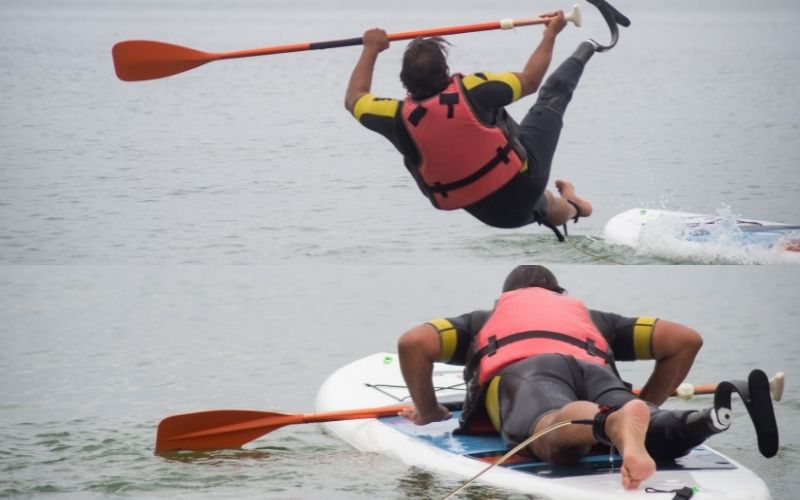
As far as self-rescuing during packrafting is concerned, it is a difficult task to perform. One needs to be careful and aware of situations, where one might require help from others. It is always good to practice rescue techniques before starting a journey, in addition to being aware of the equipment.
A Fundamental Skill For Every Packrafter to Learn and Master in Their Paddling Career
However, all types of water sports come with their self-rescue procedures. These can be as simple as swimming, or as complex as self-rescue from a sinking kayak. For those who enjoy outdoor activities and the water, the importance of this skill is vital. One of the most dangerous things that a paddler can do is to assume that rising water levels in a river or creek will be dealt with by the people in charge of making sure the waterway is safe. They are not there to get you out of a dangerous situation. You should be prepared to do this on your own.
Back to Packrafting
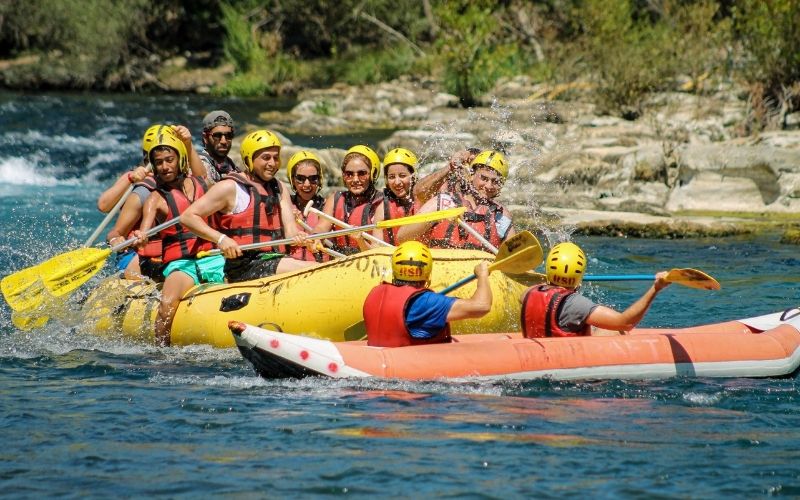
Self-Rescue
Self-rescue isn’t easy. It involves practicing and knowing when to perform it. You need to make sure you have the right gear. You’ll also have to be able to identify the problem in the first place. If you’re stuck in a whiteout, you’ll have to use a map and compass because you won’t be able to see where you’re going. Make sure to educate yourself and practice with a partner before you set out on your next journey.
Communication
Communication is important when rafting because you want to stay safe. For example, if someone falls overboard, you want to know right away so you can help them. If you don’t have a way for the people in the boat to talk to each other it can be difficult to ascertain what has happened.
Swimming
There is no exception. If you’re going on a rafting trip, you will need to know how to swim. This is a fact, and no exception will be made. You are going to need to know how to swim before you go on a trip down the river. You have to be able to swim! You don’t have to be an expert swimmer, but you have to know how to stand up and be able to navigate the currents of the river. For rafting adventures with your friends, you have to remember that swimming is a must.
Throw Rope
Throw rope is another important technique that any rafter must know. It is used to create slack in the rope that is on the side of the boat where the downstream person is going. The rope will be thrown to them so that they can attach themselves to the boat and then be pulled into the boat.
Shallow Water Crossings
Crossing a shallow stream perpendicularly can be quite a challenge, especially for those who do not feel comfortable in the water. One must be sure that there is no strong current flowing before attempting to cross it. Crossing perpendicularly requires the use of a paddle or strapping your feet to the sides of the raft. Always carry a rope, or strap your feet to the sides of the raft. You can also use your paddle as a stabilizer if you don’t have a rope or strap. If you fall out of your raft, try not to panic. Remain calm, keep your eyes open, and your feet downstream and swim across the stream.
Knots
At some point, you might have found yourself worried about the safety of the rafting knots being used. This happens to be a popular topic of discussion among rafters and people who are trying rafting for the first time. While there aren’t specific requirements as to what type of knots you have to use, there are a few safety tips you can keep in mind.
- Always use wet knots.
- Tie knots at the ends of the rope, not in the middle.
- Make sure that the anchor or wood to which you’re tying is solid.
Foot Entrapment
Foot entrapment is a common term used when a foot becomes trapped between rocks, logs, or other objects on the river bed. If a foot becomes trapped in this manner, it will be unable to use its toes or heel to push itself up and out of the entrapment. If the entrapment is not noticed and the rafter does not take action, the foot will become further trapped and a lot of pain and injury can occur. To prevent foot entrapment, be extra careful where you place your feet when rafting.
Rescuing Buddy
Rafting is a great way to have fun, or even, to learn. But, it is also a dangerous, fast-flowing river with tons of hidden dangers. It is also possible to lose your buddy! The best way to be prepared for anything is to be as educated as possible. Here are a few ways to make sure you and your friend are safe out on the water!
Packrafting and Godzone
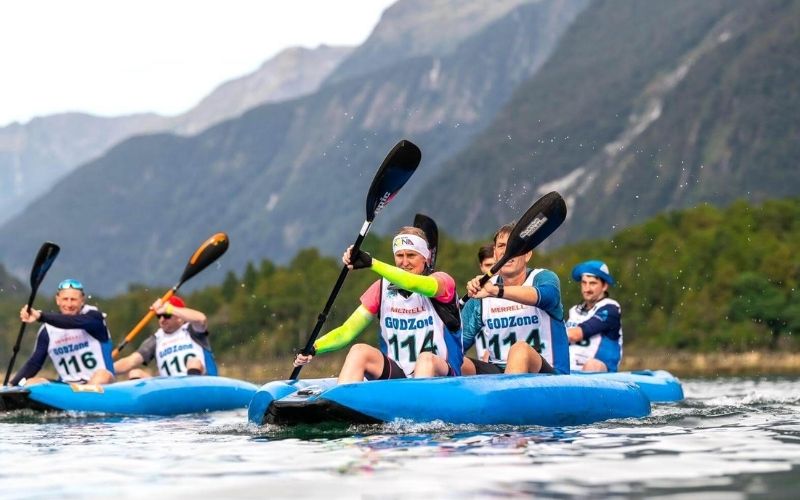
If you’re thinking about planning a trip to New Zealand (or if you’re already there!) and you’re interested in doing some pack rafting, you might not know much about it. If this is the case, we’re here to help! First of all, packrafting in Godzone is a great way to explore the beautiful wilderness of New Zealand. You can get up close and personal with some of the most impressive landscapes you’ve ever seen. You get to see areas of the island that are inaccessible by any other means. Before going, you should always make sure that you have the proper gear. If you don’t, you might find yourself in danger in some situations and it’s not a good idea to go at all! You don’t have to have a lot of money, but you should do some research to make sure that you’re going to be in safe hands.
What Happens when The Swimmer Can’t Get Back in Their Packraft?
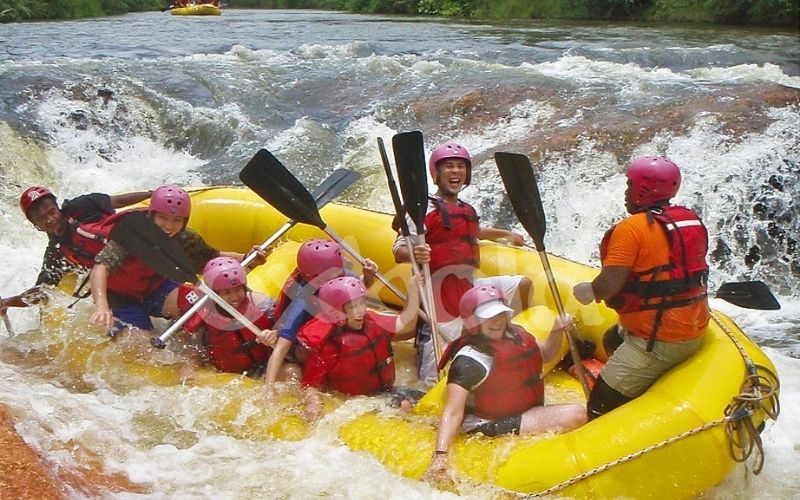
Don’t End Up in The Water Yourself
You don’t want to end up in the water while packrafting. It’s not only bad for the environment, but it’s also illegal. Packrafting can be a lot of fun, but it is a challenging sport and it’s easy to get lost if you’re not careful. It’s important to know your surroundings before you get into the water. The rivers are unpredictable and can carry you a long way, so make sure you are familiar with the layout of the river and don’t end up drowning! It’s a good idea to pack a rescue device with you just in case.
Get the Person to Safety
If a pack after is out in the wilderness and cannot get back in his boat, getting the swimmer in need to safety could be the next step. First, those in the boat will need to make sure that the swimmer is upside down. This is when you’ll need to flip the boat if the swimmer is at the back. If the swimmer is at the front, he’ll need to grab the tube flip handle on the boat and switch the boat to an upright position. If this does not work, the people in the boat will need to switch the boat to an upright position and tie a line to the swimmer. Then, those in the boat will pull the swimmer in.
Reach For The Gear
Getting hold of the gear when any swimmer cannot get back to their packragft is ideal. In the event you notice that the gear isn’t on the shore anymore, you should swim back to the point where you were swimming to get it. The gear has to be within sight so that you can find it more easily. It may appear to be a good strategy to swim out farther, but this is not the case. In the event you can’t see the gear, you need to come back over to the shore and start looking on the shore to see if it is there. You could also swim out a little further to get a better perspective. It is vital to be quick. You must find the gear as quickly as possible.
Moreover, it is a terrible sight to see a swimmer struggling in the water but they are unable to reach their packraft due to it being too far away. One thing that you could do is to get a paddle surfer. The paddle surfer will be an ideal idea when the swimmer cannot get to their packraft due to it being too far away. The paddle surfer will allow the swimmer to have something to hold onto while they float to the nearest land.
How To Prep For A Packraft Day Trip
How To Get Started?
Getting started with packrafting seems like a difficult task but it’s quite easy! To get started, you will need to obtain a pair of packrafts and a day pack. There are a lot of manufacturers that offer these products but we recommend using the ones made by Alpacka Raft. They’re the best packrafts in the industry and are built to last. If you’re looking for a good day pack, The North Face’s Tornado is a great option. It’s very comfortable, has plenty of storage, and has many other features that will make your trip as good as possible!
Learning The Ropes & Rapids?
Knowing ropes and rapids would be essential as you tackle the many obstacles in your future. Here are some essential skills for anyone to have on the water.
Learn The Appropriate Skills So You Can Explore Safely
Learning how to raft safely is important! When you’re rafting down a river and you don’t have these skills you could end up losing your life. There are a few different skills you will want to learn. First, you’ll need to learn safe ways to enter and exit the raft, especially if the river has a tricky current. Also, you’ll need to learn how to brace for the currents when you hit them. Bracing is when you hold and balance yourself in the raft. The last skill you’ll need to know is swimming. It’s important to know how to swim, even if you have life jackets on. These are just a few very important skills that you will need to learn if you are going to be a safe rafter.
Gear You Should Carry
When preparing for a packrafting day trip, it’s important to make sure you carry the right gear. You should have a paddle, helmet, and lifejackets, a small first aid kit, a water bottle or two, a waterproof bag for your phone and other electronics, and a small repair kit for potential problems. An extra layer of clothing is always good to have, as well as a snack and a map!
FAQs Related to Whitewater Packraft
How Do You Sit in a Packraft?
When you’re sitting in a packraft, you’ll want to sit in an upright position. This is not only for safety reasons, but it will be more comfortable for you. You’ll also want to ensure you bring a good paddle.
What Size Packraft Do I Need?
A packraft is a great way to travel, whether it’s to a nearby lake or on a trip to the other side of the world. There’s a lot to consider when you’re picking the perfect packraft for you. You’ll want to take into account things like the size of your group, the amount of storage space you want, and even how easy the packraft is to set up. That’s why it’s a good idea to research the packrafts that are available and how they stack up to your needs!
How Do You Deflate a Packraft?
To deflate a packraft you first need to open the packets of air. Take the valve out of the raft and connect it to the air pump. Then, pump out the air from the raft.
Note: You should deflate the raft when you’re not in it and make sure that no one is inside of it before you inflate it.
How Do You Attach a Backpack to Packraft?
Like other inflatable items, each packraft has its design. There are different ways to attach a backpack to the packraft. The most common ways are to use a hammock or to have a seat inside the raft. To use a hammock, you need to lay the raft on the ground and then attach the backpack to the raft using the hammock. For an easy seat, you can attach a backpack to a raft that has a seat. You just sit on the seat and attach the backpack to the raft.
Is it Risky to Go Whitewater Packrafting?
Yes, rafting is a lot of fun as well as risky. You are by the cool rivers and experiencing the beauty of nature. However, it can also be dangerous. The main risks of rafting are injuries you might get from the equipment, like snakes and bees that can get inside your raft.
Recommended Posts
- The Most Effective Ways to Re-Waterproof a Tent
- 12 Best Hammock Straps for an Ultimate Backpacking Experience
- How to Tour with Backpacking Budget Tips – Alert – Tested!!!
- The Ultimate Summer Camping Checklist for a Night Under The Stars
- Tips to Prevent Blisters While Hiking – Being a Professional Hiker

